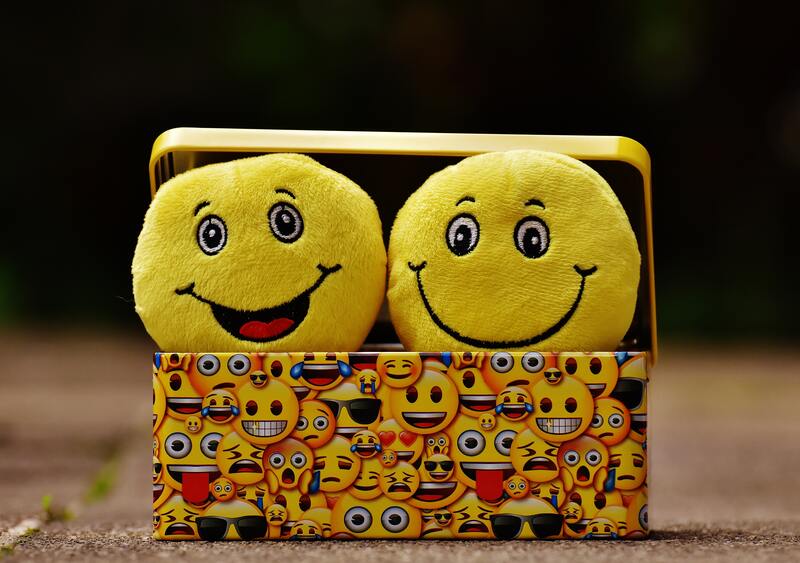We would still not believe it either if we checked how many emojis we use each day.
A quick word on those adorable “smilies,” or emojis, which have made their way into our office’s e-mail in the midst of their predominance in instant messaging applications.
Empactivo, an employee experience app, reveals that using emojis helps improve productivity and soothes relationships among colleagues.
Communication in teams would be made more enjoyable, “light,” and hence more productive if emojis were used because of their quickness.
%67 of those polled said they already use smileys in conversation, and that’s based on the 900 million emoticons exchanged daily on Facebook alone. To provide a sense of how much nonverbal communication is sent by pictures, this data excludes other extensively utilized, well-known massage techniques.
It goes without saying that this sort of language is strictly prohibited in official correspondence, but what’s wrong with adding a smiling face to the communication style of the work team?
What better method to get things done than by e-mailing a coworker with an emoji attached to the message?
Emoji usage boosts interpersonal skills, promotes pleasant interpersonal connections among coworkers, and fosters a calm working environment that is optimal.
Since 61% of managers and employers approve of emoji-based information communication, emojis are for everyone!
Stats On Workplace Use Of Emojis
Only 4% of respondents use emojis to communicate with people outside of the organization, compared to 36% who said they only use them with people on the same level as themselves.
Despite the fact that 61% of American employees say they are comfortable using emojis, 72% say they are hesitant at first. However, once they learn how to use them, the hesitancy disappears.
In light of all we’ve learned so far about emojis, the percentage of people who use them may seem to be low.
According to the findings of the research, emojis are most often used in chats between friends and romantic partners. This makes sense given the nature of such interactions and the informality represented by emojis themselves.
Only 19% of those polled claimed they mainly utilized emojis to communicate with coworkers. Another intriguing tidbit is that males utilize emoticons with their coworkers more often than women (24 percent) (14 percent ).
As with language, emotions are susceptible to careful selection depending on the context, with almost three in five users receiving the incorrect emoji and a third regretting giving one.
Emoji in the Workplace: A User’s Guide
In light of the many data collected, let’s package up our findings into a set of guidelines that every organization may follow when dealing with the “emoji vs. professional ethics” problem.
- When speaking with somebody you don’t know, do not overuse emojis.
Using emocations in internal corporate communications is typically allowable.
Of course, there are certain exceptions.
One of the best. ‘Mirroring,’ a strategy your staff should use in conjunction with common sense, should be implemented. The term “mirroring” in communication refers to mimicking the manner of the person you’re communicating with.
If your coworkers aren’t bothered by your use of emoji in communications directed to you, for example, they aren’t likely to be either. Unless you and your coworker are both at the same level in the organization’s hierarchical structure, this is an option.
Your use of emojis while interacting with your colleagues is entirely up to you. For external correspondence, emojis should be absolutely banned, unless otherwise mutually agreed upon.
Emojis are frowned upon by a majority of workers, according to a survey conducted by SurveyMonkey, and that’s reasonable. A consumer or potential customer will see the face of your business and/or brand every time they interact with an employee of your firm. One can never be sure whether or not one’s decision to utilize emojis will be well received. Unless it is part of your marketing plan or an experiment you are running, you should avoid the use of emojis in any external communications. Regulations should be put in place for the usage of emojis at official events (e.g., presentations, briefings)
- There should be guidelines for the usage of emojis at an event where employees from various departments of your organization are present (not a public event). A company’s code of conduct should include these regulations (Emoji Policy) for employees to follow.
- Emojis that some people feel provocative or indecent should not be utilized in any way whatsoever.
- Some seemingly benign emoticons might provide an opportunity for interpretation, thus their usage should be restricted.
When managing an international team of employees from diverse cultural backgrounds, this issue of”free” interpretation becomes much more dangerous since there is no way of knowing which emojis may hurt their emotions or be misread.
Regarding all these data, we love emojis and but it is better to use them mindfully to make the workplace a place of peace.
